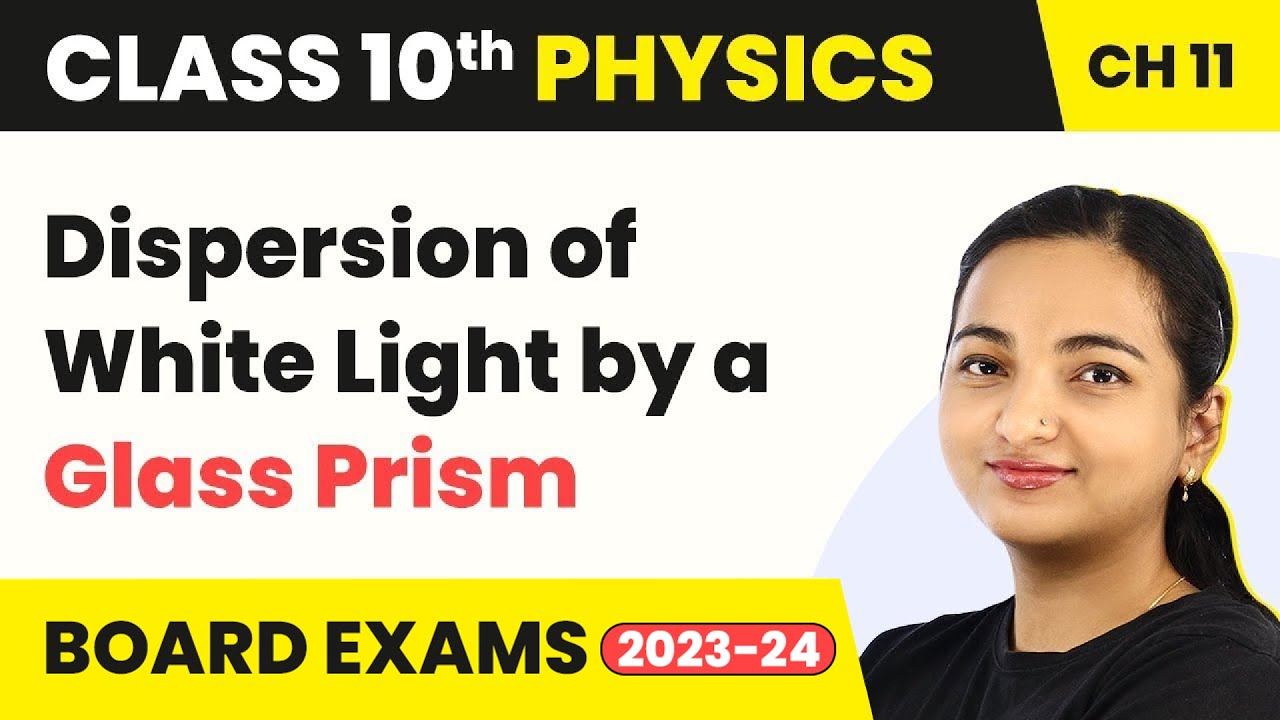S1.3.1 - The hydrogen emission spectrum
Summary
TLDRThis educational video script delves into the concept of the hydrogen emission spectrum, illustrating the behavior of light when passed through a prism versus a hydrogen gas lamp. It explains how hydrogen atoms, when excited, emit light at specific frequencies, creating a line spectrum. The script uses the Bohr model to describe electron transitions between energy levels, correlating these transitions with the observed spectral lines. It concludes by emphasizing that while some emissions are visible, others fall into the ultraviolet or infrared spectrum, invisible to the human eye.
Takeaways
- 🌈 Light passing through a prism creates a continuous spectrum, showing all visible frequencies of light.
- 💡 A hydrogen gas lamp, when excited, emits a line spectrum with specific frequencies, unlike the continuous spectrum of a light bulb.
- 🔬 The hydrogen emission spectrum is produced by excited hydrogen atoms releasing specific frequencies of light as their electrons drop to lower energy levels.
- 📊 The line spectrum shows discrete lines corresponding to specific energy transitions within the hydrogen atom.
- ⚛️ The hydrogen atom model with energy levels helps explain the observed lines in the emission spectrum.
- ⬆️ Electrons in a hydrogen atom can absorb specific frequencies of energy to jump to higher energy levels (excited states).
- ⬇️ When electrons drop back to lower energy levels, they release the exact same amount of energy they absorbed.
- 🔴 The red line in the hydrogen emission spectrum corresponds to the transition from the third to the second energy level.
- 🟢 The green, blue, and violet lines represent transitions from higher energy levels (fourth, fifth, sixth) to the second energy level.
- 🌟 The convergence of lines in the hydrogen emission spectrum suggests that energy levels in an atom get closer as they increase.
Q & A
What happens when white light passes through a prism?
-When white light passes through a prism, it is refracted and split into a spectrum of colors, creating a continuous rainbow-colored spectrum that represents all the frequencies of visible light.
What is a continuous spectrum?
-A continuous spectrum is one that shows all frequencies of light within a certain range, such as the visible spectrum, without any gaps.
How does the light emitted from a hydrogen gas lamp differ from that of a light bulb?
-The light emitted from a hydrogen gas lamp is a line spectrum, which shows only specific frequencies of light, as opposed to the continuous spectrum produced by a light bulb.
Why is the word 'frequency' important when describing the hydrogen emission spectrum?
-Using the term 'frequency' instead of 'color' is important for accuracy in scientific terminology, especially in exams, as it refers to the specific energy of the light, not just its appearance.
What is the ground state of a hydrogen atom?
-The ground state of a hydrogen atom is the most stable state where its single electron is in the lowest energy level.
How does an electron in a hydrogen atom absorb energy?
-An electron in a hydrogen atom absorbs a specific frequency of energy, which allows it to jump to a higher energy level, entering an excited state.
What happens when an electron in an excited state drops back to a lower energy level?
-When an electron drops back to a lower energy level, it releases the exact same amount of energy it absorbed, which can be observed as light of a specific frequency.
How are the lines in the hydrogen emission spectrum related to the energy levels of the atom?
-Each line in the hydrogen emission spectrum corresponds to an electron dropping from a higher energy level to a lower one, often to the second energy level, and the energy released during these drops corresponds to visible light frequencies.
What does the convergence of lines in the hydrogen emission spectrum suggest about the energy levels of the atom?
-The convergence of lines in the hydrogen emission spectrum suggests that the energy levels of the atom get closer together as they increase, indicating a structure to the atom's energy levels.
Why are some emissions from the hydrogen atom not visible to the human eye?
-Emissions from the hydrogen atom that involve electrons dropping to the first or third energy levels are not visible because they correspond to ultraviolet or infrared light, which are outside the range of human vision.
How can the energy level diagram simplify the representation of transitions in the hydrogen atom?
-An energy level diagram simplifies the representation of transitions by showing the energy levels as horizontal lines, with the electron's jumps between levels indicated by arrows, making it easier to visualize the energy changes.
Outlines

هذا القسم متوفر فقط للمشتركين. يرجى الترقية للوصول إلى هذه الميزة.
قم بالترقية الآنMindmap

هذا القسم متوفر فقط للمشتركين. يرجى الترقية للوصول إلى هذه الميزة.
قم بالترقية الآنKeywords

هذا القسم متوفر فقط للمشتركين. يرجى الترقية للوصول إلى هذه الميزة.
قم بالترقية الآنHighlights

هذا القسم متوفر فقط للمشتركين. يرجى الترقية للوصول إلى هذه الميزة.
قم بالترقية الآنTranscripts

هذا القسم متوفر فقط للمشتركين. يرجى الترقية للوصول إلى هذه الميزة.
قم بالترقية الآنتصفح المزيد من مقاطع الفيديو ذات الصلة

物理学第5回

3.3.3 - Radiação eletromagnética: Teoria Quântica - Emissão de luz por gases excitados (Bohr)

Dispersion of White Light by a Glass Prism - The Human Eye and the Colorful World | Physics

Using Emission Spectra to Determine What Stars are Made Of

Decoding Starlight – Part 5: Kirchhoff's Three Laws of Spectroscopy

F486-Dispersi cahaya ,teori plus contoh soal
5.0 / 5 (0 votes)
